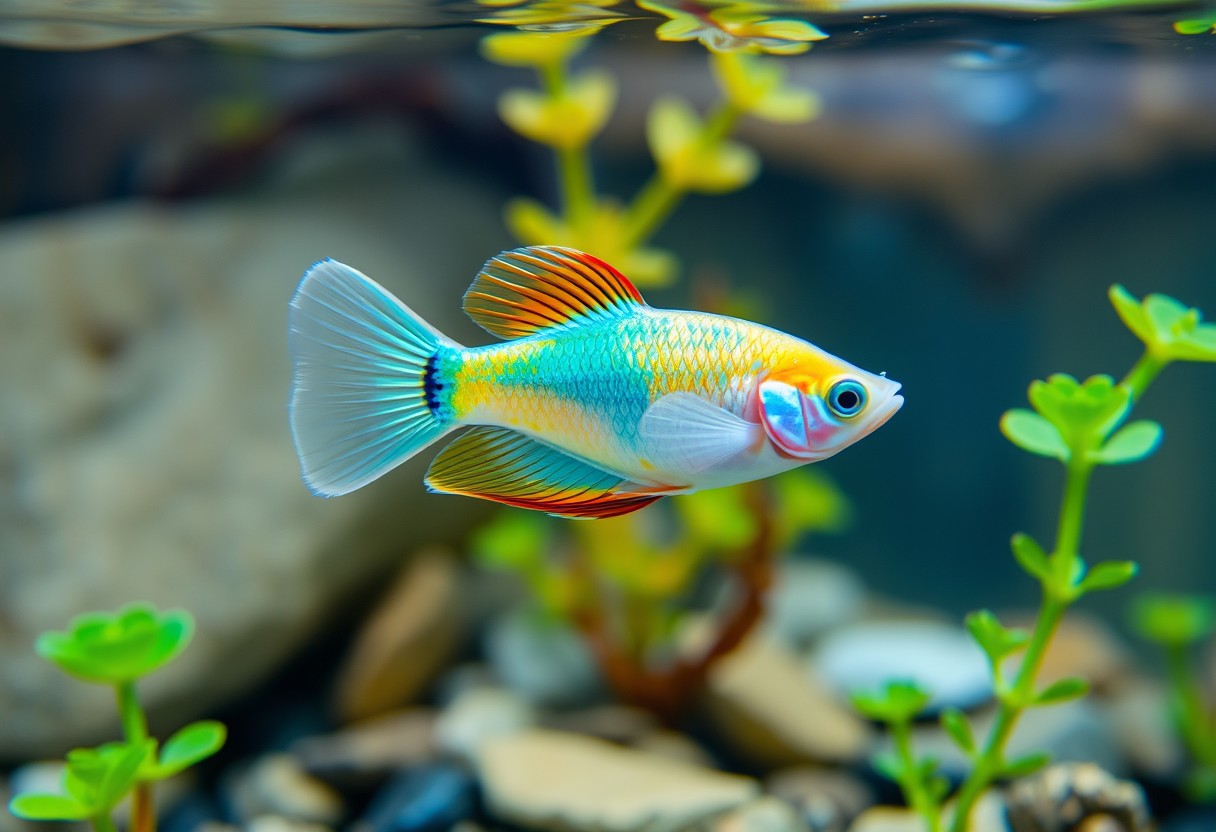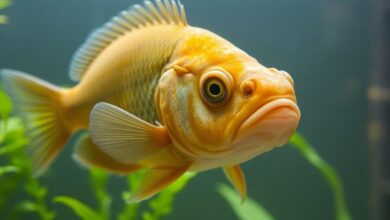Beta Fish Origin – The History of This Iconic Fish

Origin of the Betta fish, also known as Siamese fighting fish, lies deeply rooted in Southeast Asia, particularly Thailand, Cambodia, Laos, and Vietnam. You may be fascinated to know that these striking fish were initially bred for combat in territorial battles, showcasing their vibrant colors and powerful fins. Over the years, Betta fish have transitioned from fighters to beloved pets, captivating aquarists around the globe due to their unique behaviors and adaptive nature. Explore the rich history of this iconic fish and discover what makes it a cherished companion in home aquariums.
Key Takeaways:
- Native Habitat: Beta fish, also known as Siamese fighting fish, originated from the shallow waters of Southeast Asia, particularly in Thailand, Vietnam, and Cambodia.
- Cultural Significance: These fish have a rich history in Asian cultures, often symbolizing strength and beauty, and were historically bred for fighting and competition.
- Variety and Care: Over time, selective breeding has produced a wide range of colors and fin types, making them popular in the aquarium trade, though they require specific care to thrive.

The Natural Habitat of Beta Fish
While Betta fish, renowned for their vibrant colors and flowing fins, originate from the lush landscapes of Southeast Asia, primarily Thailand and Cambodia. These fascinating creatures thrive in a variety of environments, including rice paddies, shallow waters, and marshes. Their natural habitats are characterized by warm temperatures and dense vegetation, providing both shelter and access to food sources. Such environments allow you to witness the stunning beauty and adaptability of Betta fish in the wild.
Geographic Distribution
About 20 species of Betta fish inhabit diverse regions of Southeast Asia, with Thailand and Cambodia being their primary geographic distribution. You’ll find them in tranquil areas such as rice paddies, slow-moving rivers, and shallow marshes, where they flourish in warm, freshwater environments. These areas offer not only ideal conditions for growth but also abundant food sources, making them perfect breeding grounds for your beloved Betta companions.
Environmental Adaptations
Fish have remarkable adaptations that enable them to thrive in their natural habitats. Their ability to breathe atmospheric air through a specialized labyrinth organ is notable, allowing you to keep Betta fish in environments with low oxygen levels. Furthermore, they exhibit remarkable resilience to stagnant water conditions, making them well-suited to their often-turbulent ecosystems.
Consequently, these adaptations are not merely fascinating but critical for survival. The Betta’s ability to extract oxygen from the atmosphere protects them in stagnant waters, where dissolved oxygen levels can be dangerously low. Additionally, this resilience allows Betta fish to endure the challenges posed by pollution and habitat degradation. To maintain the health of your Betta, ensuring a suitable environment that mimics these conditions is vital.
Cultural Significance
Some cultures in Southeast Asia have long revered Beta fish, often incorporating them into local traditions and festivals. These fish symbolize prosperity and luck, making them popular gifts during significant life events. Their vibrant colors and graceful movements captivate onlookers, which is why they play an integral role in many rituals. You may be surprised to learn that in some regions, Beta fish are also kept as a means of attracting good fortune and warding off negativity (the cultural importance of these fish is undeniable).
Traditional Uses in Southeast Asia
Along with their colorful beauty, Beta fish have been significant in Southeast Asian culture for centuries, often seen in local festivals and home altars. They are believed to bring prosperity, good luck, and harmony to households, which is why you might find them in traditional ceremonies. Communities celebrate these fish during cultural events, where their presence is thought to enhance the festivities. Additionally, some regions practice competitive fish keeping, showcasing their prized specimens as part of local traditions. (You should consider how these practices reflect the deep cultural connections people have with their environment.)
Popularity in the Aquarium Trade
Trade in Beta fish has soared in recent years, making them a favorite among aquarium enthusiasts. Their striking colors and unique fin varieties appeal to hobbyists around the globe, adding visual excitement to your aquatic displays. You’ll find that their relatively easy care and resilience also contribute to their popularity, as they fit well into various aquarium setups.
The rise of Beta fish in the aquarium trade stems from their vibrant colors and striking appearances, which make them stand out in any tank. You’ll love the variety of fin shapes and colors available, from the delicate veil tails to the magnificent crown tails, all designed to captivate your interest. Furthermore, their hardiness and adaptability make them a practical choice for both beginners and experienced aquarists. However, be cautious, as their aggressive nature can lead to conflicts if kept with incompatible species. Overall, you’ll discover that Beta fish bring immense beauty and joy to your aquarium while being a fascinating part of fishkeeping culture.

Breeding Techniques
Despite the diverse methods employed in breeding Beta fish, the evolution of these techniques has significantly shaped the fish’s availability and quality. Traditional and modern practices offer insights into how people around the world have sought to enhance the beauty and resilience of this iconic species.
Traditional Breeding Practices
After centuries in Southeast Asia, traditional breeding practices revolved around natural rituals, where males would build bubble nests and lure females for mating. Breeders paid close attention to water quality and temperature while providing care to the fry. These practices reflected a deep understanding of the fish’s needs, ensuring healthy offspring were produced in a sustainable manner.
Modern Breeding Innovations
Behind today’s increased popularity of Beta fish lies innovative breeding technologies that allow for a greater variety of strains and colors. Techniques such as selective breeding and controlled environments have led to stunning aesthetics and enhanced survivability in Beta fish. As a result, you now have access to an expansive selection, making it possible for you to find the perfect companion for your aquarium. (The development of these methods has transformed Beta breeding into a profitable industry.)
Breeding methods have evolved significantly, allowing you to cultivate a diverse range of Beta fish strains with unique colors and patterns. Advances in genetics and the use of scientific breeding techniques have minimized risks associated with diseases and genetic defects. Furthermore, selective breeding techniques ensure that you receive bright, healthy fish that stand out in any aquarium, thus enhancing your enjoyment as an aquarium enthusiast. (Your choices in this field can greatly impact the overall quality and health of the Beta fish population.)

Conservation and Environmental Impact
Your understanding of Beta fish origins must also include the ecological challenges they face today. Conservation efforts are necessary not only for the survival of these iconic species but also for the health of their ecosystems. As habitats shrink, and water quality declines, it is vital to promote sustainable practices among fish enthusiasts and to protect the delicate balance of their natural environments.
Threats to Natural Populations
Around the world, wild Beta fish populations face significant threats such as habitat destruction, pollution, and climate change. These factors have severely impacted their numbers and diversity, leading to declines in their habitats and altering their breeding patterns. Constant development, agricultural runoff, and changing temperatures contribute to a pressing risk for these fish and their ecological communities.
Conservation Efforts
Above all, initiatives aimed at protecting Beta fish habitats and promoting responsible breeding practices are underway. Organizations are focusing on habitat restoration and advocating for sustainable aquarium trade practices. Education is also vital, ensuring that enthusiasts understand the importance of protecting these species and their environments (the recent global agreement on fish conservation is a notable step forward in these efforts).
Another important aspect of conservation is working with communities to raise awareness about the threats Beta fish face. By encouraging sustainable practices, individuals can help promote biodiversity and support habitat preservation. Supporting environmentally friendly products and advocating for policy changes further enhance these efforts (engaging in local conservation groups can strengthen these programs significantly).
Final Words
To wrap up, understanding the origins and historical significance of the Betta fish enriches your appreciation for this stunning aquatic species. Originating from Southeast Asia, these remarkable fish have a rich cultural heritage and have evolved into diverse breeds through selective breeding. You can explore more about their fascinating history and traits by visiting the Betta page. By learning about their background, you enhance your experience as an owner and aquarist, ensuring a more fulfilling connection with your Betta.
FAQ
Q: What is the origin of Betta fish and where were they first discovered?
A: Betta fish, also known as Siamese fighting fish, originated from the waters of Southeast Asia, particularly in Thailand, Cambodia, Laos, and Vietnam. They were first discovered in the rice paddies, streams, and floodplains of these regions, where they thrive in warm, shallow environments. Historically, these fish were admired not only for their vibrant colors and flowing fins but also for their aggressive combat nature, which led to their use in fights among local villagers as early as the 12th century.
Q: How did Betta fish become popular as pets and in aquariums?
A: The popularity of Betta fish as pets began in the 19th century, particularly when they were introduced to Europe and the United States. Their striking appearance and relatively easy care made them appealing to aquarists. In addition, selective breeding led to the development of various color patterns and fin types, further enhancing their desirability. By the early 1900s, Betta fish were featured in aquarium shows and competitions, solidifying their status as one of the most popular aquarium fish in the world.
Q: What cultural significance do Betta fish hold in Southeast Asia?
A: In Southeast Asia, particularly in Thailand, Betta fish hold significant cultural and historical importance. They are often seen as symbols of strength and resilience due to their fighting nature. Traditionally, Betta fighting has been a popular entertainment form, drawing large crowds and deep-rooted cultural practices. Additionally, they are featured in various local art and folklore, signifying the rich connection between the Betta fish and the people of this region. Betta fish are not only a hobby for aquarists but also a heritage species for many communities in Southeast Asia.





